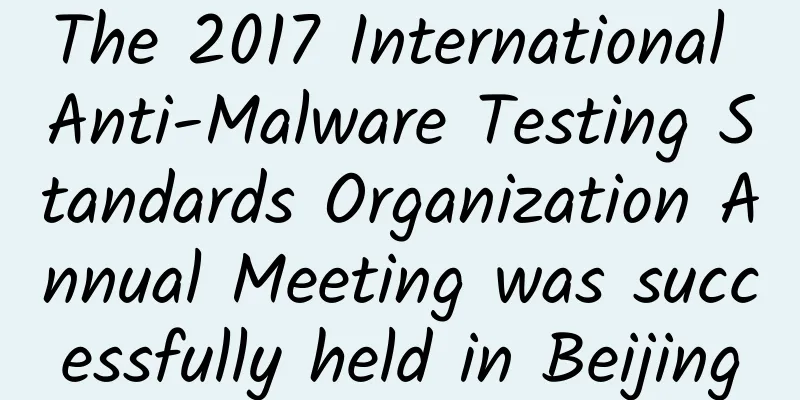IT spending priorities for 2020

|
The role of the CIO has become a transformational one. According to the 2020 CIO Survey, 46% of IT leaders say their jobs are already primarily focused on transforming the business. But in the new decade, CIOs will also take on some strategic responsibilities across a variety of endeavors and will need to strike a difficult balance between business innovation and operational excellence. In fact, in a 2020 State of the CIO survey, 58% of IT leaders believe their CIO role will become that of a business strategist in the next three to five years.
How companies advance their business and keep their IT assets active depends in part on where they spend their budgets, which are increasing this year, said John McKnight, executive vice president of research and analyst services at Enterprise Strategy Group. "CIOs told us that 56% of organizations expect to increase IT spending in 2020," McKnight said. "About 40% will keep their budgets the same, while about 5% plan to cut spending. Overall, we expect organizations to see modest annual budget increases between 2019 and 2020, with the average annual rate of change in spending expected to increase by 3.2%." He said that for most organizations, cybersecurity is very important, which is why they put a significant portion of their IT budget there. “Strengthening cybersecurity is the No. 1 business initiative driving tech spending in 2020,” McKnight said. Other key areas include using data analytics to gain real-time insights and improving customer experience, he added. These three trends will have a significant impact on CIO leadership in 2020 and beyond. Here, we review the business priorities driving IT investments so far this year and talk to several CIOs about where they will invest to deliver on their 2020 business plans, as well as where they think other CIOs need to make their budget bets. 12 budget priorities for IT Respondents to the State of the CIO survey cited improving operational efficiency (37%), improving customer experience (35%) and strengthening cybersecurity protections as the top three business drivers for IT budgets this year. As part of their ongoing modernization efforts, CIOs are also earmarking IT budgets to help transform business processes (30%) and improve employee productivity (21%). CIOs are also setting some bottom lines, with 24% of CIOs targeting IT spending to improve profitability, 19% to increase operating income, and 15% to introduce new digital revenue streams. To accomplish these tasks, CIOs reported the following technology initiatives as the top drivers of IT investments in their organizations this year:
Increase investment in customers For Citrix CIO Meerah Rajavel, 2020 will be the year more CIOs need to better manage the pressure to increase efficiency, reduce costs and innovate. "In my opinion, IT needs to practice what we preach here and leverage modern technologies like AI/ML, analytics, etc. to automate IT tasks and become a data-driven organization," she said. "Every CIO is the owner of the P&L, and if you run the business like budget as the 'L' and your value contribution to the top and bottom lines as the 'P', then the discussions you have with the CEO, CFO and board are going to be very different." Customer engagement is a key priority for Rajavel’s IT department at Citrix in 2020. “As we move to a SaaS model, my first priority is to align our digital/IT capabilities to support the transformation with greater customer engagement. We are also focusing on operational excellence. As a company, we are also committed to helping customers deliver an exceptional employee experience that drives engagement and productivity,” she said. “We are doubling down on our efforts to deliver solutions that give companies secure and reliable access to the applications and insights their employees need and want to use to perform at their best.” Emphasize employee engagement Customer and employee experience is also a top priority for Barry Shurkey, CIO of NTT DATA Services. “We want to improve the productivity of 50,000 NTT DATA Services employees while simplifying, stabilizing, modernizing and securing the enterprise IT portfolio,” he said. For Shurkey, doing so is as much a matter of shifting culture as it is a matter of metrics. “You have to instill these priorities in your team, they can’t just be yours. So it’s important to know how to make these priorities relevant to every employee so that they can have an impact,” he said. “So it’s important to have a good partnership with our business units and then communicate as you progress through the year so that everyone stays actively engaged and makes sure your company or business has metrics in place for each of your priorities.” This means tracking key performance indicators to track improvements and help explain where budget should be shifted to meet changing needs. “You need to track metrics before and after, and train teams on what is important to measure and what is not. By providing a clear and comprehensive picture of progress from start to finish, as well as insight into where and how work is being done, CIOs will be able to make informed requests for budget expansion with an understanding of where funds are allocated,” he says. Drive value with data James McGlennon, executive vice president and chief information officer of Liberty Mutual Insurance Group, said he and his management team have developed a 2020 strategy to support the company's goal of becoming a top-three property and casualty insurer in the world. For Liberty Mutual, that means ensuring “that our technology teams deliver business value with every delivery. And that this shared vision gives every technology employee clarity on where we’re going and how they can contribute to our success,” McGlennon says. To achieve these goals, McGlennon's overall IT budget has been increased to help address technical debt and consider additional investments in areas such as data science and machine learning. He said strengthening Liberty Mutual's security posture, moving workloads to the cloud, building skills for the future, optimizing costs, and gaining deeper insights into existing data are also major priorities for Liberty Mutual's IT team. "Several years ago, we made a commitment to move our technology platform from our own data centers to the public cloud. Moving to the cloud has enabled us to get working software into the hands of end users faster," he said. "We are helping employees understand the types of skills they will need in the future and providing them with a wide range of resources to help them adapt to future roles. We have also been working to improve our understanding of costs so we can make better investment decisions." This effort also includes the use of financial tools to help provide the transparency needed for effective planning and discussions with partners. “Through data analytics, we gain greater insight into the true cost of our applications. Tracking the health and age of our applications generates real-time analytics that inform investment decisions and deliver more return on every dollar,” he said. “We know data will make us more competitive and delight our customers on a daily basis, so we are always looking to gain more insight into the data we have and how it can deliver value and drive improved outcomes for our customers.” Focus on cybersecurity Like many IT executives today, Mike Krza, COO of managed services at Flexential, worries about cybersecurity and compliance issues. “As we start to see more cyberattacks and more regulations every year, CIOs are starting to worry about data protection and security. They want to make sure they are protected 24 hours a day, seven days a week and can grow effectively,” Krza said. He sees many IT leaders looking for ways to establish more control over their costs and more accurately predict future costs, he added. "We are seeing partners moving away from public cloud and back to hybrid IT due to unexpected costs or changes in requirements," he said. "We are also seeing customers using colocation, cloud and public cloud access to manage their workloads and move from multiple sites to a unified location." Krza said that in 2020, Flexential will focus on IT complexity and distributed workloads to help customers identify trends, stay secure and gain the skills and key initiatives needed to thrive in the future. "As the IT environment changes rapidly, the role of IT is also expanding. IT technology will become more complex, and workloads will become larger and more distributed. Under the concept of everything as a service, you need to know more and manage more. In order to survive in this highly dynamic hybrid IT environment, your business really needs to have a certain degree of flexibility and rapid adaptability," he said. |
<<: How to create a new financing model for product-based IT
Recommend
Elegantly read http request or response data
There are many ways to read data from http.Reques...
[11.11] Hostons: AMD Ryzen+NVMe series VPS 50% off starting at $2/month, multiple data centers in Los Angeles/Salt Lake City/Portland, etc.
Hosteons also launched a Double 11 event, offerin...
XenSpec: $2.95/month KVM-1GB/10GB/1Gbps unlimited traffic/Los Angeles, Chicago data centers
We have shared information about XenSpec several ...
AI technology trends that matter to businesses
According to the 2020 McKinsey Global Artificial ...
How to quickly develop killer applications? Which will have a greater impact on the market, 5G or edge computing?
[[269430]] Is edge computing the first new trend ...
How to achieve lossless video transmission in any environment
Lossless video transmission is critical to variou...
EtherNetservers: $15/year-1.5GB/40GB/2TB/2IP/Los Angeles & Jacksonville Data Centers
EtherNetservers was founded in 2013 and has been ...
A simple guide to Wi-Fi, a must-read when buying a router
In this article, we will talk about the wireless ...
5G messaging: Where does it come from? Where is it going?
On December 3, 1992, Neil Papworth, a 22-year-old...
Countries around the world are competing to develop 5G network DSS technology, causing controversy
After the 5G standards were frozen, the global in...
Ruijie worked hard for three days and three nights to help build the network of Xi'an Fangcang Hospital
Xi'an, a world-renowned ancient capital and c...
Playing with Bitcoin = playing with fire? This is what the heads of major central banks think
As Bitcoin becomes more and more popular around t...
Omdia Observation: Small fiber network operators in the UK and US are driving the new FTTP boom
The latest report from market research firm Omida...
RackNerd: KVM starts at $9.49 per year, Intel or AMD Ryzen, multiple data centers in Los Angeles/Seattle/San Jose, etc.
RackNerd is a foreign hosting company founded in ...
Wi-Fi 6 certification, here are 6 issues worth paying attention to!
This article is reproduced from Leiphone.com. If ...









